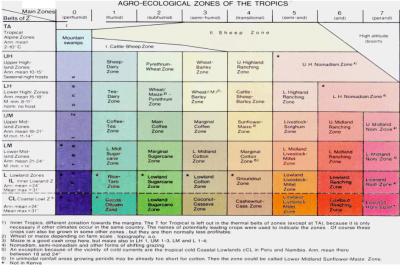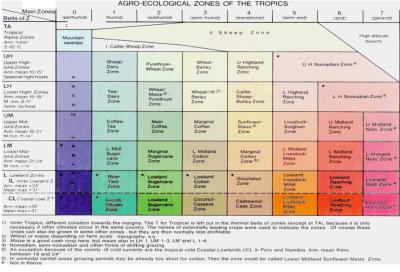

Fusarium Bark Disease (<i>Fusarium stilboides</i>)
Not widely spread in Kenya except in Taita Taveta District and Makuyu area in Eastern Province. It occurs in 3 different forms and not necessarily all forms present at the same time:
1. Storey's Bark Disease (most common). Suckers attacked at base causing depressed dark brown lesions with yellow margins at times. Pink spore masses are sometimes seen on lesions, which girdle the stem. Girdled old suckers at times continue growing with constriction of bottle neck at base. Weakened suckers may break from wind or picking.
2. Scaly bark (second most common). Bark of the tree rises up in flakes on mature stems. Cankerous regions may develop and die back can follow, though affected stems could also survive.
3. Collar rot. Infection spreads downwards from infected suckers, gradually girdling the tree base. Cankerous lesions develop round stem base at soil level. Constriction appearance may occur and die-back begin from top of tree. Mulching too close to the stem may cause similar rot. Soil- borne fungi may cause seedlings in the nursery to die in the same manner.
- Report suspected infections to CRF or coffee extension officer. For Storey's bark disease affected suckers or heads should be cut off and burnt.
- Pruning scars should be treated with fungicidal paint or tar mixed with linseed oil.
- Disinfect pruning tools by dipping in spirit with 70% alcohol.
- Uproot and burn on the spot trees dying back from collar rot and old stumps as well as severely diseased trees if no healthy suckers develop.
- Weed around the plants without damaging the bark.
- Pay attention to soil fertility and acidity, correcting where necessary.
- Eliminate wood boring insects.
